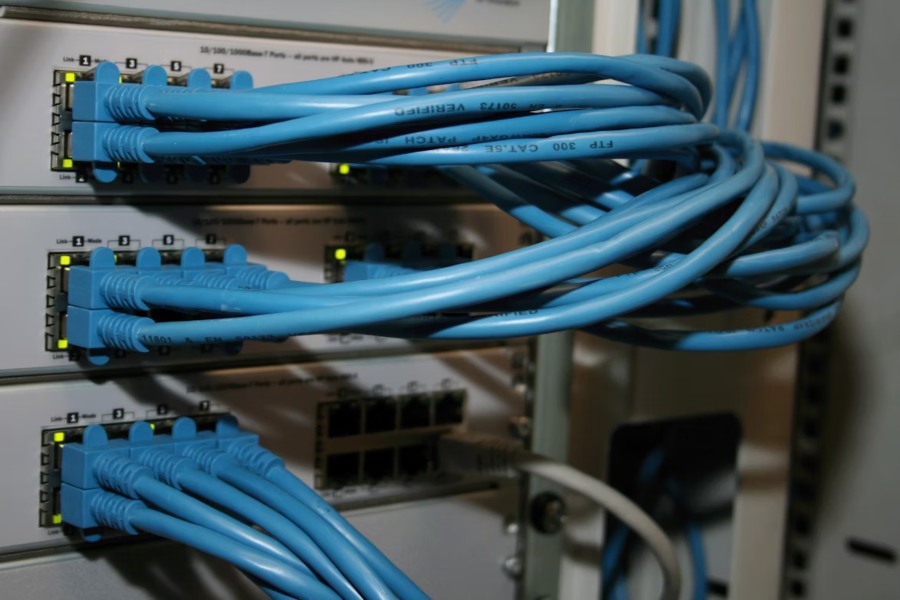
In the vast world of networking, IP address management plays a vital role. One common term that appears frequently is the “/22” subnet. But how many IP addresses in a /22 are available, and what does this subnet mean for your network infrastructure?
The “/22” is part of CIDR (Classless Inter-Domain Routing) notation, which helps allocate IP addresses more efficiently than the old class-based system. If you’re managing a medium-sized enterprise network, designing a subnetting plan, or trying to optimize IP usage, understanding how many IP addresses are in a /22 subnet is crucial.
This article aims to break down everything you need to know. From the total number of addresses to usable ones, from how to calculate them to where/22 fits into broader network design, we’ll cover it all. Whether you’re a networking student, sysadmin, or IT professional, by the end of this guide, you’ll confidently answer the question: How many IP addresses are in a /22?
Let’s dive into subnetting basics and learn how to make the most of a /22 block of IPs.
What is a /22 Subnet and Why It Matters
When someone asks how many IP addresses are in a /22 subnet, it’s important to begin with what “/22” means in networking. The term is derived from CIDR (Classless Inter-Domain Routing) notation, which is used to specify the number of bits allocated for the network portion of an IP address. In a /22 subnet, 22 of the 32 available bits are designated for the network, leaving the remaining 10 bits to define host addresses within that network.
To determine the total number of IP addresses available in any given subnet, the formula used is 2 raised to the power of the number of host bits. In this case, 2^10 equals 1024 total IP addresses. However, not all of these addresses are usable for devices. Two addresses in every subnet are reserved: one for the network identifier (the first IP in the range) and another for the broadcast address (the last IP in the range). That leaves 1022 usable IP addresses available for assignment to devices, servers, routers, or endpoints.
This allocation makes a /22 subnet highly practical in medium-sized environments. It is commonly used in corporate campuses, large branch offices, data centers, and managed hosting services. It provides a substantial number of IPs while remaining simple to manage compared to larger blocks.
Understanding how many IP addresses are in a /22 isn’t just about the math—it’s also a crucial part of network planning. A well-sized subnet helps ensure efficient IP address utilization, simplifies routing, and supports future growth. Choosing a /22 often reflects a deliberate strategy to balance scalability with efficient resource management in a controlled network environment.
How to Calculate IP Addresses in a /22 Subnet
A /22 subnet is commonly used in mid-sized networks due to its generous IP address range. Here’s how to calculate and understand its structure.
What Is the Subnet Mask of a /22?
The subnet mask for a /22 is 255.255.252.0. This mask indicates that the first 22 bits of the IP address are allocated to the network portion, while the remaining 10 bits are used for host addresses. This expanded host range allows the network to serve a larger number of devices within a single subnet.
How Many IP Addresses Does a /22 Have?
To calculate the total number of IP addresses in a /22, use the formula 2^(32 – subnet bits). In this case, 2^(32 – 22) equals 1024 total IP addresses. These include both usable and reserved addresses.
How Many Are Usable?
Out of the 1024 total IPs, 2 addresses are reserved—one for the network address (the first IP) and one for the broadcast address (the last IP). This means a /22 provides 1022 usable IP addresses for hosts, routers, or other devices.
How Does a /22 Compare to /23 or /24?
A /22 offers more address space than/23 or /24:
- A /24 provides 256 total addresses, with 254 usable.
- /23 gives 512 total addresses, with 510 usable.
- A /22 delivers 1024 total addresses, with 1022 usable.
This makes a /22 four times larger than a standard /24 subnet.
Who Typically Uses a /22 Subnet?
A /22 subnet is commonly used by:
- Internet Service Providers (ISPs) need larger address pools.
- Enterprises managing VLANs or segmented networks.
- Medium-sized companies with multiple departments or server clusters.
This subnet strikes a balance between scalability and address efficiency in moderately sized network environments.
Characteristics of a /22 Subnet
The /22 subnet is a practical choice for medium-sized networks that require a larger address pool than smaller subnets like /24 or /23. It provides a balanced mix of scalability and efficient IP address allocation. Below are the essential characteristics that define a /22 subnet:
- Total Addresses: 1024
- Usable Addresses: 1022
- Network Bits: 22
- Host Bits: 10
- Subnet Mask: 255.255.252.0
- Prefix Length: /22
- Broadcast Address: Last IP in the subnet’s range
- First Usable IP: The IP address immediately after the network address
- Last Usable IP: The IP address just before the broadcast address
- Common Use Cases: Mid-size LANs, multi-department business networks, and hosting environments with multiple servers
Because it supports over a thousand IP addresses, a /22 subnet is often deployed in scenarios where a /24 or /23 would be too limiting, but larger subnets would be excessive. It offers a comfortable middle ground, allowing IT administrators to segment their network logically while preserving address space. Whether for internal use or public-facing services, /22 remains a favored option for networks that require both flexibility and efficient resource management.
Real-World Applications of /22 IP Address Blocks
The question of how many IP addresses are in a /22 is not just theoretical. In the real world, these address blocks are used in a variety of scenarios that balance capacity and efficiency.
Internet Service Providers (ISPs) often assign /22 blocks to business clients who require more than a /24 but less than a /20. With 1022 usable addresses, a business can deploy multiple servers, host websites, run internal services, and assign IPs to hundreds of devices.
Similarly, data centers use /22 subnets for customer allocation. For example, a virtual private server (VPS) provider might divide their address space into /22 chunks for clients, ensuring enough room for expansion while maintaining subnetting simplicity.
Educational institutions, like universities, may use a /22 for dormitories or department-specific segments. The subnet size allows for both room-by-room allocation and administrative separation.
Moreover, in cloud architecture, container clusters or Kubernetes nodes can benefit from /22 subnets to reduce the need for constant IP reassignment or network reconfiguration.
From efficient IP allocation to streamlined routing, the /22 subnet proves itself a versatile option.
SEO Breakdown – How Many IP Addresses in a /22 Subnet?
A /22 subnet is a popular choice for medium-sized networks that need a large pool of IP addresses without jumping to enterprise-scale blocks. Here’s how it works:
CIDR Notation: /22
CIDR blocks like /22 indicate how IPs are divided between the network and the host. In /22, 10 bits are for host allocation.
IP Capacity: How Many IPs in /22?
With 10 host bits: 2^10 = 1024 total IPs. Minus 2 for network and broadcast leaves 1022 usable IP addresses.
Subnet Mask and Range
The /22 subnet uses 255.255.252.0, allowing addresses like 192.168.0.0 to 192.168.3.255.
Comparing /22 with /23 and /24
- /24 = 254 usable
- /23 = 510 usable
- /22 = 1022 usable. Perfect for scaling medium infrastructures.
Best Use Cases for a /22 Subnet
- Hosting companies
- VLAN separation
- Scalable office networks
Conclusion
So, how many IP addresses are in a /22? A total of 1024 addresses, of which 1022 can be assigned to devices. The /22 subnet offers a balanced option between flexibility and scalability in IP planning. Whether you’re building a medium-sized internal network or provisioning IPs in a cloud-based system, the /22 block provides ample room without being wasteful.
Understanding the structure of a /22 also strengthens your grasp of broader networking strategies. CIDR notations like /22 help optimize address space, simplify routing, and streamline network segmentation.
FAQ’s
What is the total number of IP addresses in a /22?
A /22 subnet contains a total of 1024 IP addresses, including both usable and reserved addresses for networking functions.
How many usable IP addresses are in a /22?
There are 1022 usable IP addresses in a /22. One IP is reserved as the network address, and one is reserved as the broadcast address.
What is the subnet mask of a /22?
The subnet mask for a /22 subnet is 255.255.252.0, which allows for 1024 total addresses in that range.
Is /22 good for home networks?
A /22 is too large for typical home networks, which rarely need more than a few dozen IPs. Subnets like /29 or /30 are more efficient.
How do I calculate usable IPs in any subnet?
Use the formula: 2^(32 – subnet bits) – 2. For example, in a /22, that’s 2^(32-22) – 2 = 1022 usable IP addresses.





